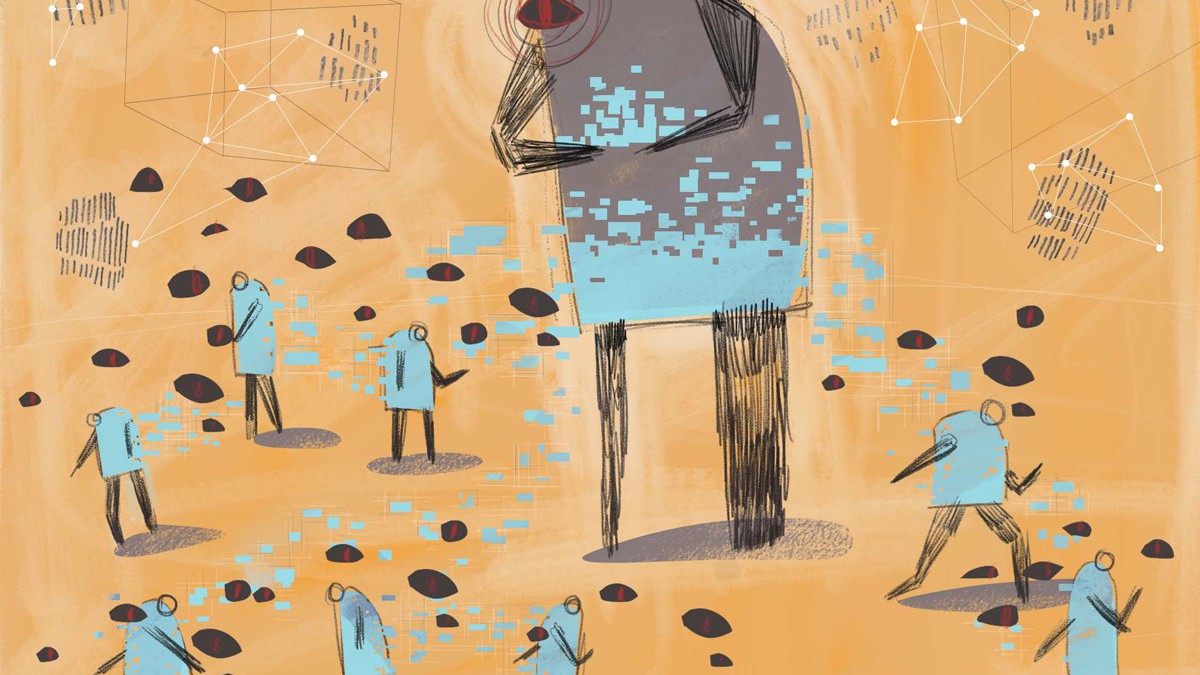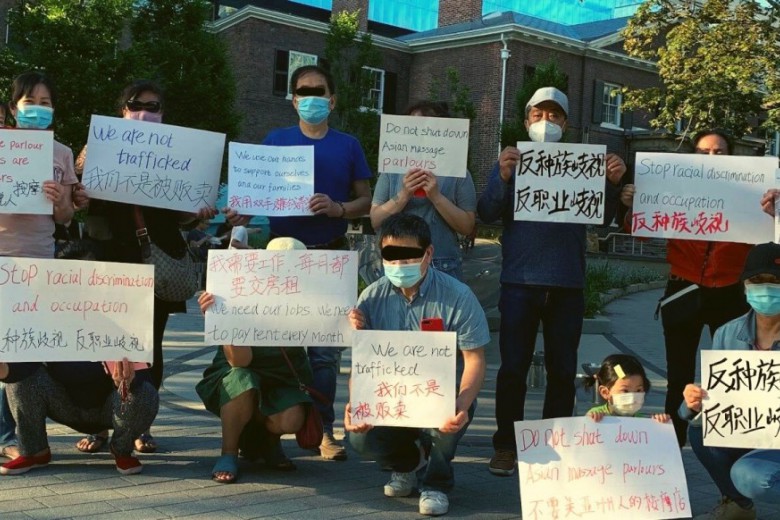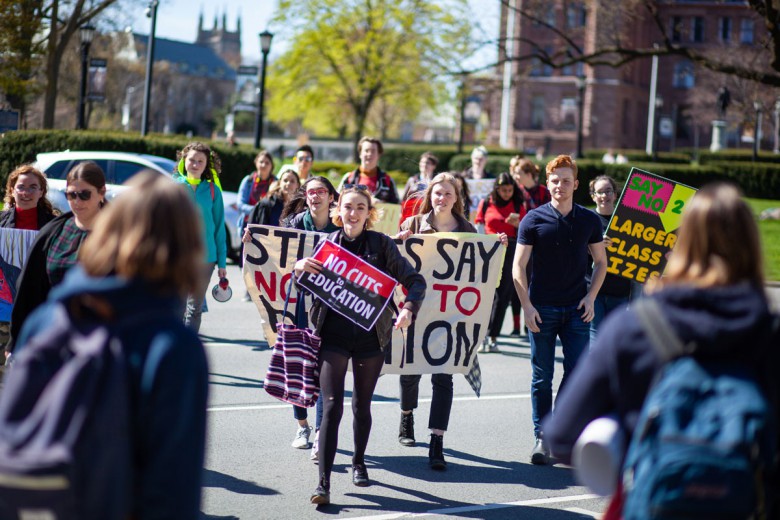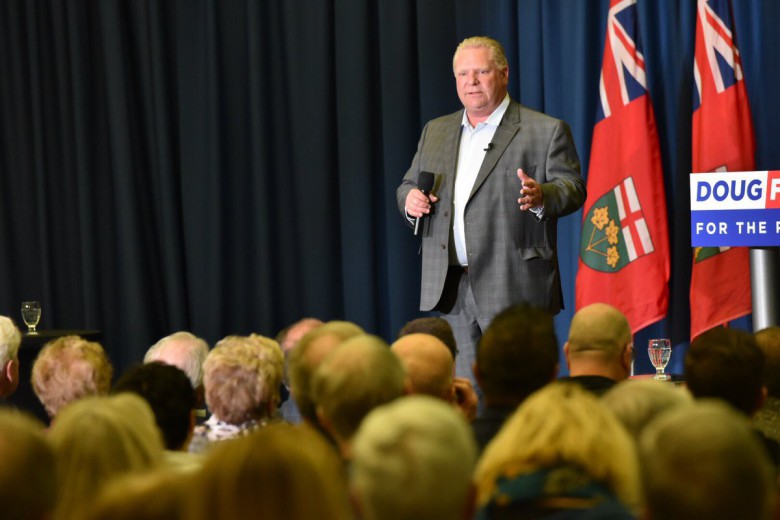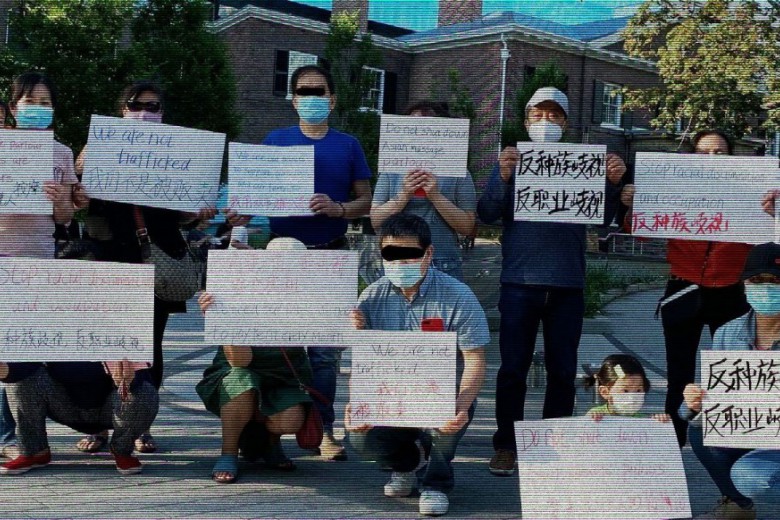Imagine getting an email from your boss titled “Your monthly performance.” That uneasy feeling gripping you is related to the possibility that you have done something that will put your job at risk. This anxiety is not the result of a known or specific threat – rather, it comes from the anticipation of possible dangers that have not yet manifested. Whereas fear is characterized by emotional responses to known threats, anxiety is a chronic insecurity that arises out of what is unknown.
What links precarious work to anxious workers is this chronic insecurity. Modern work increasingly lacks predictability, security, and material or psychological support. Precarity is a form of insecurity that treats workers as disposable. Such feelings of disposability are then channelled into management rhetoric – brand management, anger management, parental management, time management – all of which, according to the Institute for Precarious Consciousness, offer anxious workers the illusion of control in return for the ever greater internalization of insecurity. Typically, though, anxiety and insecurity – in the workplace and beyond – are treated as individual problems rather than collective ones. Writing in the New Inquiry, Isabell Lorey points out that under the yoke of neoliberal capitalism, self-management is becoming part of the structural fabric of our workplaces, and has developed into an indispensable tool for controlling workers.
This governing increasingly takes place through an omnipresent web of surveillance. The current mythology is that with more data comes greater worker efficiency. This view is so seductive that many industries, from health care to education, are repositioning themselves for large-scale data gathering by way of video surveillance, radio frequency identification chips, GPS tracking, keystroke monitoring, and more. At the Ottawa Hospital, for example, staff members are expected to wear tracking devices around their necks to monitor their movements and patient input rates. Ontario premier Doug Ford recently set up a snitch line where “concerned parents” can rat out teachers who deviate from the 20-year-old sex education curriculum he’s deemed acceptable. High school students are told to be careful about what they post on Facebook, lest prospective employers decide to go deep-sea fishing in their social media. Across the country, Uber drivers vie to maintain a five-star rating – if they drop too low, they’ll be fired.
Typically, though, anxiety and insecurity – in the workplace and beyond – are treated as individual problems rather than collective ones.
When reduced to a series of invasive metrics set and sustained entirely on employers’ terms, precarious forms of work are made even more insecure. In such a climate, surveillance anxiety can come from your implied audience on social media – a vague mass out there, watching you, judging your posts, likes, and shares – and the murkier databases into which our personal information flows. It can also come from the sort of ambient tension one feels when marching on a picket line, catching glimpses of surveillance cameras recording striking workers from a private security van parked across the street.
Watching the workers
The anxieties generated by surveillance also function to stifle dissent. Writing for Rank and File, Daniel Tseghay highlights the long history of state surveillance of labour activists in Canada. As early as the 1930s, the RCMP was keeping tabs on the actions of members of the Canadian Labour Defense League, a civil rights group founded in 1925 to protect striking workers from prosecution. The passing of Bill C-51 in 2015, which gave federal agencies the authority to conduct mass warrantless surveillance, is simply the latest step in a process eliminating public oversight from the powers of intelligence services.
While the Canadian state uses surveillance to monitor its own citizens, employers use it to discipline their employees. After all, what makes surveillance technologies such an effective tool is how they enable bosses to provoke insecurity, to play with emotional and physical experiences, and to keep tabs on “unprofessional” behaviour – not just in the workplace, but also online and off the clock. During a labour disruption like a strike, the anxieties of being tracked, ranked, incentivized, and monitored reach a fever pitch.
Today, when labour activists take to the picket lines, they are forced to acclimatize quickly to their new roles as assets for data extraction. This was certainly the case during the record-breaking York University strike of 2018. Facing down the second disruption in three years from CUPE 3903 – a local with a strong practice of membership-driven “bargaining from below” and a reputation for prolonged strikes – York University took calculated steps to change its approach to labour relations by using new surveillance, communication, and outreach strategies.
It can also come from the sort of ambient tension one feels when marching on a picket line, catching glimpses of surveillance cameras recording striking workers from a private security van parked across the street.
Acting on the advice of anti-labour lawyers at Hicks Morley LLP and a public relations spin team at Enterprise, the university administration sat down with CUPE 3903 at the bargaining table for less than two days over the duration of the strike, preferring instead to communicate indirectly through public tweets and press releases, and private emails. After the picket lines went up on March 5, Primary Response, a private security firm specializing in the real-time monitoring of labour disputes, was contracted to surveil, record, and catalogue the actions of workers. The firm’s actions actually contravened York’s own policies, which state that when taking photographs, video, and audio recordings, the surveiller must obtain consent in compliance with the Freedom of Information and Protection of Privacy Act (FIPPA).
Karmah Dudin, an undergraduate student at York and member of Reclaim YorkU, a student movement fighting for a more democratic university structure, tells me: “Security members were present – some in plain clothes – at any protest or gathering, recording us. No one knew where these pictures and videos would be stored or for what purposes they would be stored.”
York University already retains a heavily equipped campus police force. Their decision to deploy additional private security personnel was estimated to cost them over $20,000 in the first 10 days of the strike alone. York is no longer just interested in controlling dissent – which was the traditional task of campus cops – but now places a premium on large-scale data collection. Over the course of the strike, the Canadian Civil Liberties Association (CCLA) issued three separate public letters to York University’s president and vice-chancellor, Rhonda Lenton, denouncing “allegations of intimidation by security personnel and surveillance of lawful protesters.”
How are you being tracked in the office, at the pickets, or online?
The CCLA also conducted a poll of nearly 200 community members to gauge how students and workers were feeling in response to the civil liberty violations incurred through the university’s tactics. When asked if people “felt intimidated or harassed by York security officials or private security officers,” over 55 per cent of the respondents answered “yes.” When asked if they had been “filmed without consent,” 68 per cent answered “yes.” When asked if community members experienced the feeling of being surveilled, or “felt that evidence was gathered about [them],” over 68 per cent responded “yes.” And finally, when asked if they “felt the university was on [their] side,” over 84 per cent of community members responded with a resounding “no.”
Twinned anxieties
With the York administration showing no interest in collective bargaining or consulting with the union, the strike ended in late July when back-to-work legislation was passed by the newly elected Ford government.
At that point, York turned to their own extra-legal method of punishing workers: a loosely defined student code of conduct that is administered by a York-appointed tribunal with powers so broad they can be used for anything from banning participation in student clubs on campus to indefinite expulsion. To mobilize it, they drew from the countless social media posts and surveillance footage they had taken during the strike. They threatened to discipline undergraduate activists for their role in the reclamation of the York senate chamber, as well as union organizers for legal, secondary pickets at members of the York Board of Governors’ offices. The collected data was weaponized in the hopes of suppressing future dissent.
“The excuse that all this surveillance was ‘for our safety’ is laughable,” Dudin tells me. “I’ve received multiple threats concerning my future at York from security. Outside the reclaimed York University senate chambers, we continuously overheard them talking about how ‘these students are going to get it with reprisals, and regret all of this.’”
“With the student code being mobilized to deal with protesters, I feel anxious about my employment and student status,” she continues. “My only sense of security and support has come from community members – whether it be students, staff, or faculty. It definitely feels like if you are known as a dissenter, your status at York University is a precarious one.”
“The excuse that all this surveillance was ‘for our safety’ is laughable.”
The total amount that York spent on PR, lawyers, and private security likely dwarfs the cost of the union’s demands. Yet the York strike of 2018 is one example of the changing terrain of labour relations that favours data collection over direct engagement. Instead of sitting down with workers, exchanging information, and reaching a compromise through open dialogue, employers can now focus on collecting their own data and actively using it to set their own agendas through a process Chris Lorenz, a professor of theory and history at Vrije Universiteit Amsterdam, calls “new public management.”
But as Kate Crawford points out in the New Inquiry, surveillance anxiety is always a conjoined twin: the anxiety of the surveilled is deeply connected to the anxiety of the surveillers. Even during a labour disruption, the anxiety of the surveillers can be hard to see – it’s hidden in classified internal documents and delivered in highly coded media briefings. And while – at least in the case of York University versus CUPE 3903 – there is usually an enormous structural power asymmetry between the surveillers and surveilled, those with the power to watch are haunted by the anxiety that no matter how much information they manage to collect, it will always be incomplete.
In The Soft Cage, Christian Parenti argues that combatting workplace surveillance will require a collectively enforced reverse surveillance, through which the anxiety-inducing practices of employers are subjected to the gaze of critics and workers. To do so, we need to familiarize ourselves with the ways we are subjected to the insecurities of surveillance. How are you being tracked in the office, at the pickets, or online?
This is not a call for action against surveillance at any cost – which can end up creating further anxiety and insecurity for workers. Rather, it is a call for a shift in the way we think about our roles within a culture of surveillance, with the aim of transforming such engagement into more effective forms of resistance. By building reverse surveillance networks across unions and workplaces grounded in the shared, systemic nature of our anxieties, workers can develop a collective fluency in the processes of surveillance – an important first step in transforming our isolated anxieties into collective anger.


